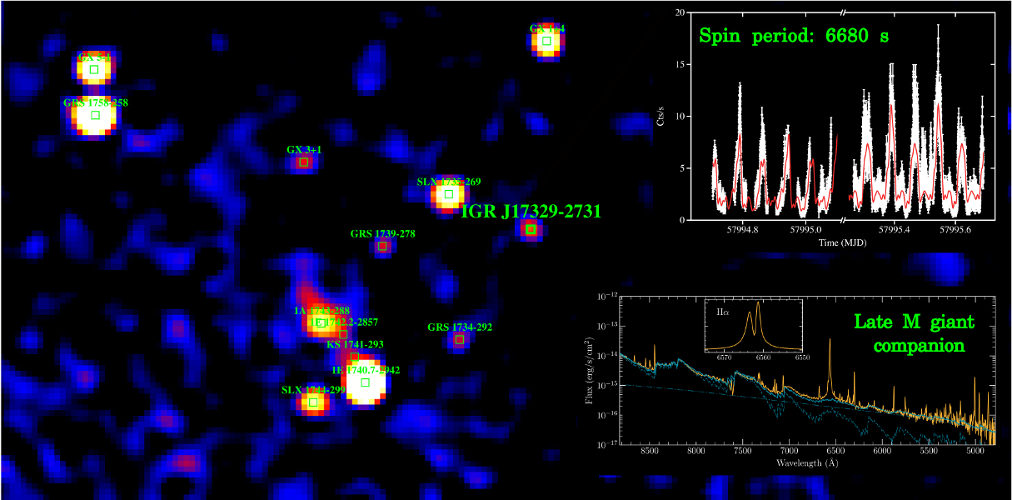
 Credit: Bozzo et al. 2018; ESA
Credit: Bozzo et al. 2018; ESA
A Young Symbiot?
Stars are gregarious, and in particular, like to form partnerships. These partners dance to a tune called by their mutual (gravitational) attraction. But partners develop differently, sometimes growing apart, sometimes growing closer. Sometimes their character changes suddenly in a fundamental way. Recent observations with the INTEGRAL Gamma-ray observatory detected hard X-ray and Gamma-ray emission from a new source, which was dubbed IGR J17329-2731, based on its location in the sky. This new source was a bit of a mystery, and so followup studies were made the XMM-Newton, Swift and NuSTAR X-ray satellite observatories, and the ground-based SOAR telescope. These observations told a strange tale. The XMM-Newton, Swift, NuSTAR and SOAR observations revealed X-ray emission from a slowly rotating, highly magnetized neutron star which was accreting from the wind of a low-mass normal companion star. Such systems, which produce X-ray emission by feeding on the wind of a companion star, are called symbiotic systems, stars whose observed phenomena, like X-ray emission, are based on the fact that they "live together" and interact. But these symbiotic X-ray binaries are usually observed as persistent sources of X-ray emission, and the interesting thing is that, even though INTEGRAL observed the region of sky near IGR J17329-2731 many times over the years, it was only first detected as a high energy source in August, 2017. This suggests that INTEGRAL witnessed the birth of a new symbiotic binary star system, perhaps ignited by an increase in the wind from the normal companion star. The image above shows the INTEGRAL image of the sky around IGR J17329-2731, while the inset plots show the X-ray pulsations, and the SOAR spectrum of the companion red giant star.
Published: April 16, 2018
<
HEA Dictionary ● Archive
● Search HEAPOW
● Other Languages
● HEAPOW on Facebook
● Download all Images
● Education ● HEAD
>

Each week the HEASARC
brings you new, exciting and beautiful images from X-ray and Gamma ray
astronomy. Check back each week and be sure to check out the HEAPOW archive!
Last modified Tuesday, 27-Feb-2024 10:10:08 EST


